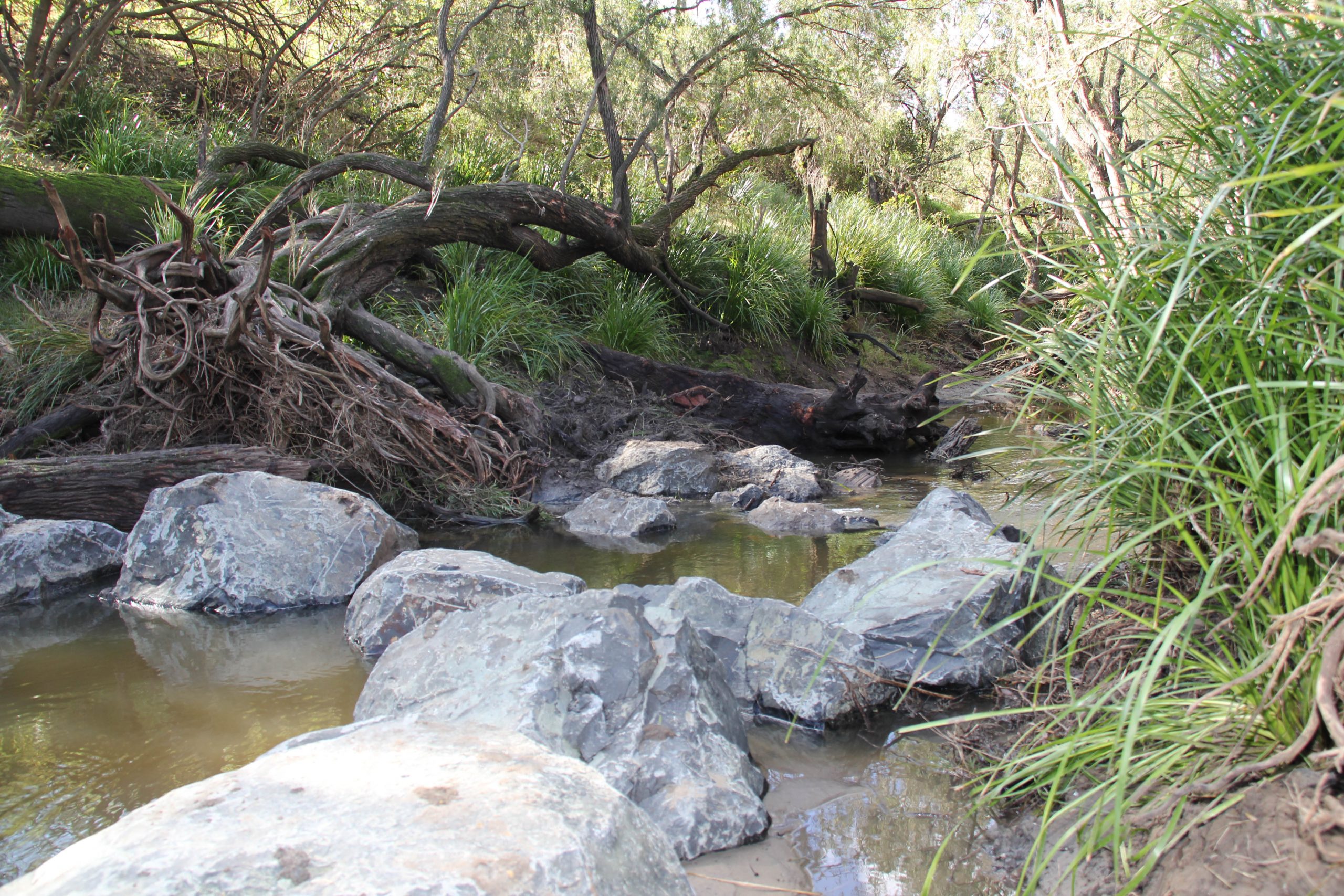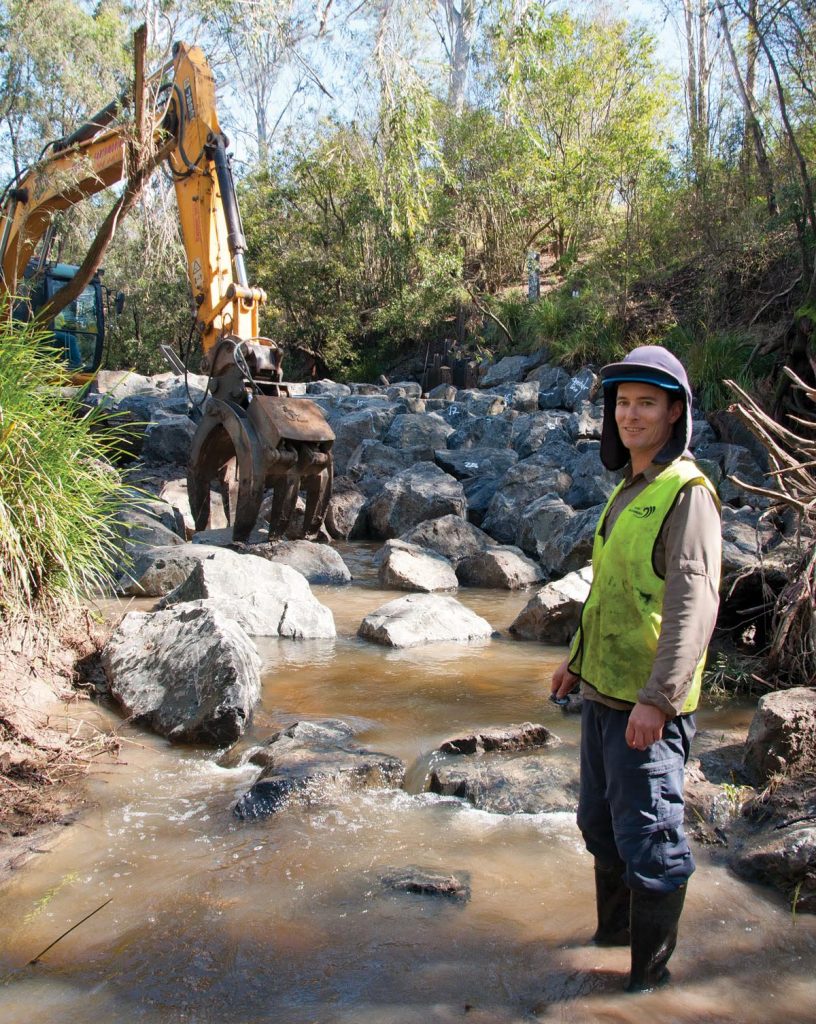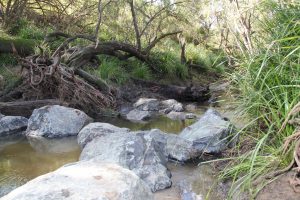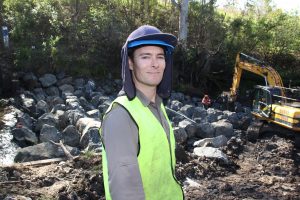Queensland’s longest fish ladder at Ipswich
Aug 23, 2016
August 3 saw the construction of Queensland’s longest ‘fish ladder’ in Ipswich. Over 80 metres long, 2.4 metres high and with 35 steps and pools – once completed the ladder will give important native fish species easy access to their upstream homes for the first time in more than fifty years. The project sees Ipswich…


August 3 saw the construction of Queensland’s longest ‘fish ladder’ in Ipswich.
Over 80 metres long, 2.4 metres high and with 35 steps and pools – once completed the ladder will give important native fish species easy access to their upstream homes for the first time in more than fifty years.
The project sees Ipswich City Council leading the charge in improving fish population and waterway health in South East Queensland.
The structure is being delivered in tandem with environmental consultants and fish ecology specialists, Catchment Solutions, alongside Reef Catchments and Stanwell Corporation Limited.
 “This is a huge step up, so to speak, for our native fish in the Bremer river area. There are numerous fish ladders in Queensland but none as long as 80 metres,” said Matt Moore, fisheries biologist with Catchment Solutions in Mackay.
“This is a huge step up, so to speak, for our native fish in the Bremer river area. There are numerous fish ladders in Queensland but none as long as 80 metres,” said Matt Moore, fisheries biologist with Catchment Solutions in Mackay.
“Fish populations upstream of Berry’s Weir have declined significantly due to restricted fish passage and movement through the water since the weir was built in the 60s. For example, we know while you can catch Australian Bass downstream below the weir, people have stopped catching them upstream.”
The weir is 2.4 metres high posing an insurmountable challenge for all juvenile and adult native fish, particularly diadromous (migratory) species, which need to swim upstream from the sea to freshwater habitats to complete their lifecycle, before returning as fully grown adults to spawn.
“It’s a rite of passage for fish and without this full cycle, what we will see is significantly reduced populations of important recreational and commercial native fish species like Australian bass, sea mullet and long and short-finned eels. That’s a problem for waterway health, fish diversity, and recreational fishing,” Mr Moore said.
“What the ladder does is provide a series of steps and pools in a natural rock formation that allow the fish to easily ascend over the barrier (in this case the weir) by swimming, stopping for a rest, and swimming again.”
 Ipswich Mayor Paul Pisasale said council was committed to helping improve local waterways.
Ipswich Mayor Paul Pisasale said council was committed to helping improve local waterways.
“The challenges we face today in improving our local waterways did not come about overnight, and as such it will take several years to meet them,” he said.
“Council is committed to balancing environmental needs alongside our city’s on-going growth and making sure sustainability is front and centre for all that we do.
“This fish ladder is an important piece of infrastructure that will directly improve conditions for fish in the Bremer River and is a part of council’s strategy of focusing heavily on actions that will directly improve waterway health.”
Mr Moore said the Bremer River had been identified in a recent report as one of the key priority areas for removal of fish barriers.
“Report findings identified over 13,000 potential barriers to fish passage in the South East Queensland area. Berry’s Weir in the Bremer River was listed in the top ten target fish barrier sites, coming in at number seven as one of the most important sites to improve fish passage.
“I’d like to extend a huge congratulations to Ipswich City Council for recognising and investing in the restoration of fish passage to improve waterway and aquatic ecosystem health.
“Likewise, works could not have gone ahead with the support and cooperation of Stanwell, which own the weir, and have played an integral part in this process. This is an excellent example of true collaboration and the sustainability outcomes that can be achieved.”
It is hoped the fish ladder will also help improve the Bremer Catchment’s overall waterway health score, which was listed as a D- in the latest Healthy Waterways Report Card.